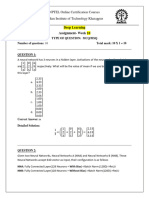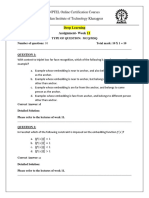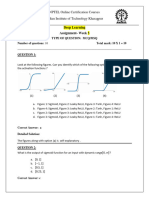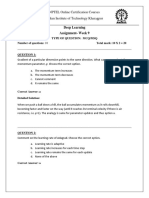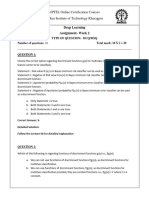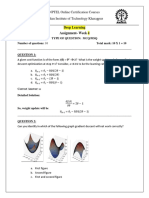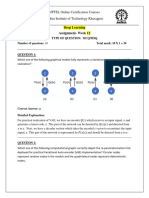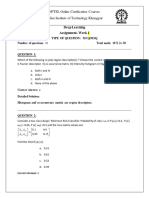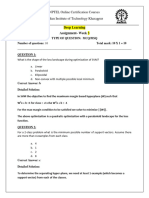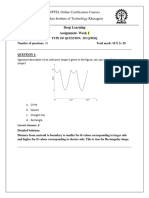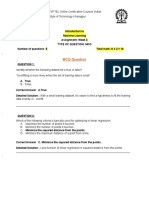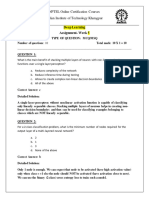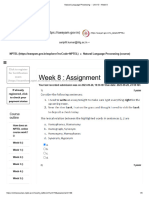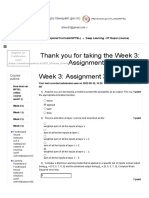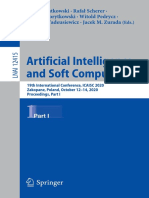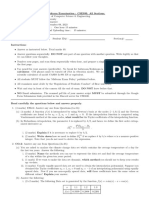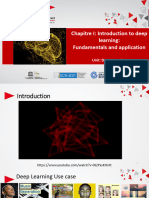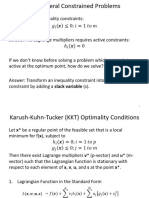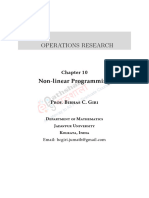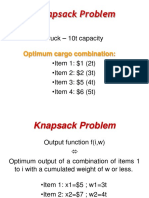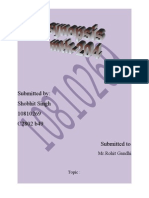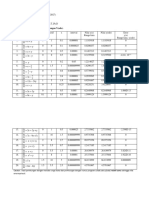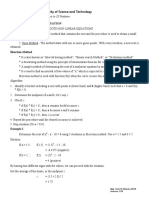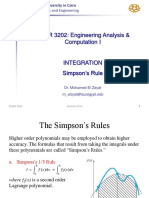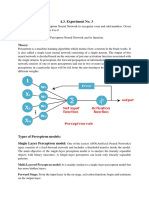100% found this document useful (2 votes)
1K views6 pagesDL - Assignment 8 Solution
This document contains a 10 question multiple choice quiz about deep learning concepts such as convolutional neural networks, transfer learning, and vanishing gradients. The questions cover topics like the effects of subtracting a constant from the input to the softmax layer, the purpose and effects of pooling layers, identifying low-level versus high-level features in a CNN, and advantages of the ReLU activation function over sigmoid and tanh. The document provides the questions, multiple choice answers, and detailed solutions to explain the concepts tested in each question.
Uploaded by
swathisreejith6Copyright
© © All Rights Reserved
We take content rights seriously. If you suspect this is your content, claim it here.
Available Formats
Download as PDF, TXT or read online on Scribd
100% found this document useful (2 votes)
1K views6 pagesDL - Assignment 8 Solution
This document contains a 10 question multiple choice quiz about deep learning concepts such as convolutional neural networks, transfer learning, and vanishing gradients. The questions cover topics like the effects of subtracting a constant from the input to the softmax layer, the purpose and effects of pooling layers, identifying low-level versus high-level features in a CNN, and advantages of the ReLU activation function over sigmoid and tanh. The document provides the questions, multiple choice answers, and detailed solutions to explain the concepts tested in each question.
Uploaded by
swathisreejith6Copyright
© © All Rights Reserved
We take content rights seriously. If you suspect this is your content, claim it here.
Available Formats
Download as PDF, TXT or read online on Scribd
/ 6

